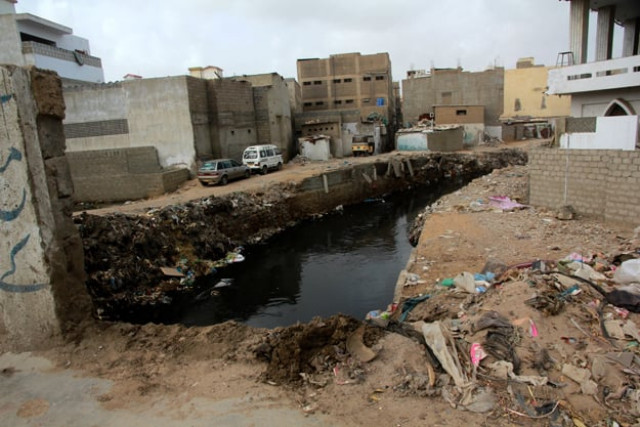Encroachments to be razed ‘to maintain nullah width’
As many as 13,441 houses have been illegally built on four nullahs and a river in Karachi

The Provincial Coordination and Implementation Committee has decided to remove and relocate human settlements and commercial units illegally established along Karachi's nullahs in order to maintain the drains' width in line with the city's master plan.
The decision was made in a committee meeting chaired by Sindh Chief Minister Syed Murad Ali Shah on Monday, after the participants were apprised that there were 13,441 houses and 2,948 commercial structures built on four nullahs and a river in the metropolis.
These structures reportedly include 5,916 houses and 2,412 commercial units on Gujjar Nullah, 4,480 houses and 380 commercial units on Orangi Nullah, 1,049 houses and 156 commercial units on Mehmoodabad Nullah and 1,996 houses on the Malir River.
The government also issued evacuation notices to those residing and doing businesses in these areas.
Meanwhile, the Sindh CM was informed that the NED University of Engineering and Technology was conducting a survey to help analyse the length, width and capacities of the existing stormwater drains. Moreover, the study is to assist in developing a drone-assisted map and outline of the encroached areas.
Karachi Commissioner Sohail Rajput stated during the session that nine nullahs in the East district had been surveyed, while the survey of the Central district's drains would be completed by the end of the week.
The meeting further decided to conduct a technical study of the nullahs using hydrologic and hydraulic modelling studies. Under these studies, the demarcation of the existing drainage network, quantification of the expected flow in the region and cross-sectional details of nullahs will be used to assess the existing system's capacity to cater to the flow. An ideal cross-section would be proposed for the current and future improvement of each drain, based on terrain and flow models, while also helping prepare the best drainage management plans to mitigate the risk of urban flooding in the future.
Following this, the CM directed Rajput to complete the technical study within the next three months.
Keeping in view different factors, the meeting decided to maintain the actual width of nullahs as per the master plan while removing human settlements and commercial establishments from the sites for this purpose. However, the NED University's study results will be considered in determining the optimal size of the nullahs.
The committee also decided to work out different models for resettling the displaced citizens, which would be further discussed in the next apex committee meeting. A three-member committee, comprising the city administrator, commissioner and Sindh local government secretary, is to prepare the rehabilitation plan.
On the other hand, Sindh Solid Waste Management Board (SSWMB) managing director Zubair Ahmed Channa informed the participants that a cleanliness drive had been underway in the city since October 20.
Deciding to reward the best-performing districts and union councils, the CM stated he would be satisfied when citizens started saying their areas were being swept properly and the garbage was lifted regularly.
The meeting was attended by Sindh Labour Minister Saeed Ghani, Karachi Corps Commander Lt Gen Humayun Aziz, planning and development additional secretary Aziz Uqaili, Karachi administrator Iftikhar Shallwani, transport secretary Shariq Ahmed and others.
Published in The Express Tribune, October 27th, 2020.



















COMMENTS
Comments are moderated and generally will be posted if they are on-topic and not abusive.
For more information, please see our Comments FAQ